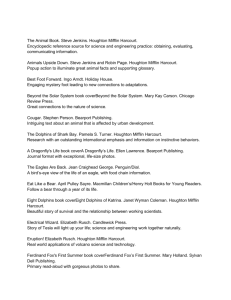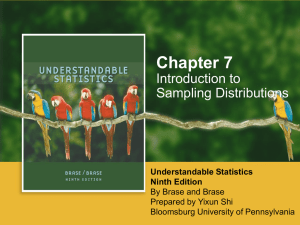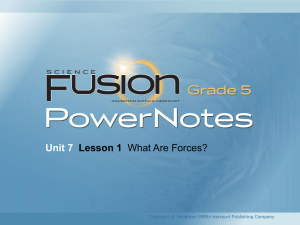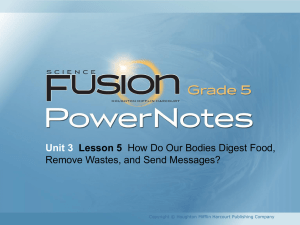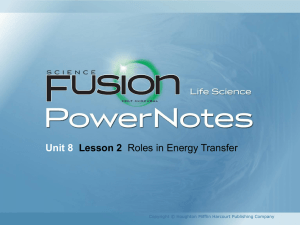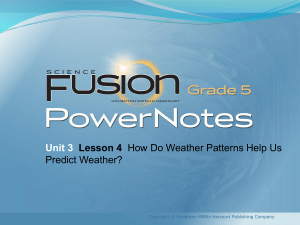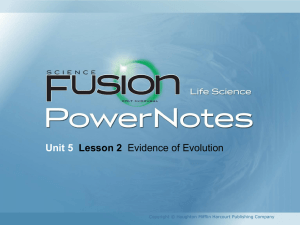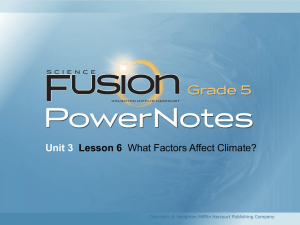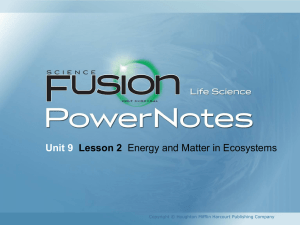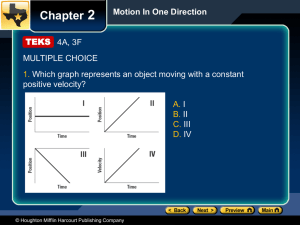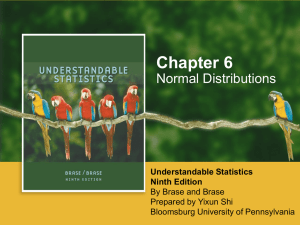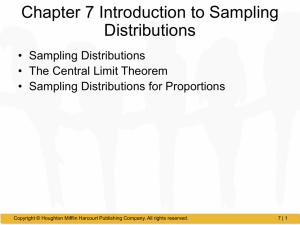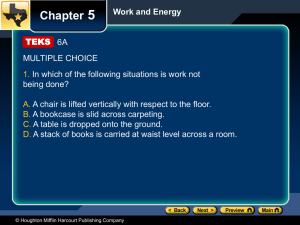6-1_CFLAEAS493558_U08L03
advertisement
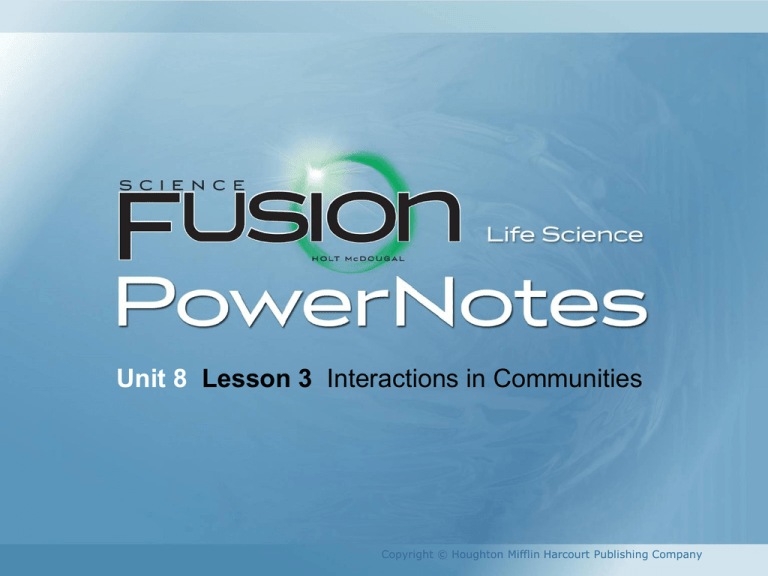
Unit 8 Lesson 3 Interactions in Communities Copyright © Houghton Mifflin Harcourt Publishing Company Unit 8 Lesson 3 Interactions in Communities Florida Benchmarks • SC.7.N.1.1 Define a problem from the seventh grade curriculum, use appropriate reference materials to support scientific understanding, plan and carry out scientific investigations of various types, such as systematic observations or experiments, identify variables, collect and organize data, interpret data in charts, tables, and graphics, analyze information, make predictions, and defend conclusions. Copyright © Houghton Mifflin Harcourt Publishing Company Unit 8 Lesson 3 Interactions in Communities Florida Benchmarks • SC.7.L.17.2 Compare and contrast the relationships among organisms such as mutualism, predation, parasitism, competition, and commensalism. • LA.6.2.2.3 The student will organize information to show understanding (e.g., representing main ideas within text through charting, mapping, paraphrasing, summarizing, or comparing/contrasting). Copyright © Houghton Mifflin Harcourt Publishing Company Unit 8 Lesson 3 Interactions in Communities Florida Benchmarks • LA.6.4.2.2 The student will record information (e.g., observations, notes, lists, charts, legends) related to a topic, including visual aids to organize and record information and include a list of sources used. • SC.7.L.17.3 Describe and investigate various limiting factors in the local ecosystem and their impact on native populations, including food, shelter, water, space, disease, parasitism, predation, and nesting sites. Copyright © Houghton Mifflin Harcourt Publishing Company Unit 8 Lesson 3 Interactions in Communities Feeding Frenzy! How do predator and prey interact? • The feeding relationships of organisms establish the structure of a community. • In a predator-prey relationship, one animal eats another animal for energy and nutrients. • The predator eats another animal. The prey is the animal that gets eaten. Copyright © Houghton Mifflin Harcourt Publishing Company Unit 8 Lesson 3 Interactions in Communities How do predator and prey interact? • Predators and prey have adaptations that can help them survive. • Some predators have talons, claws, or sharp teeth. • Some have camouflage to help them blend in with the environment. • Some prey animals, such as skunks, defend themselves with chemicals. Copyright © Houghton Mifflin Harcourt Publishing Company Unit 8 Lesson 3 Interactions in Communities How do predator and prey interact? • The sizes of predator and prey populations are linked very closely. • If one population grows or shrinks, the other population is affected. • For example, if most of an antelope population is killed, a population of lions might have less to eat. Copyright © Houghton Mifflin Harcourt Publishing Company Unit 8 Lesson 3 Interactions in Communities Living Together What are the types of symbiotic relationships? • A close long-term relationship between different species in a community is called symbiosis. • In symbiosis, the organisms in the relationship can benefit from, be unaffected by, or be harmed by the relationship. Copyright © Houghton Mifflin Harcourt Publishing Company Unit 8 Lesson 3 Interactions in Communities What are the types of symbiotic relationships? • A symbiotic relationship in which both organisms benefit is called mutualism. • An example of mutualism is the relationship between bees and flowering plants. The interaction benefits both organisms. Copyright © Houghton Mifflin Harcourt Publishing Company Unit 8 Lesson 3 Interactions in Communities What are the types of symbiotic relationships? • A symbiotic relationship in which one organism benefits while the other is unaffected is called commensalism. • For example, lichens use tree bark for a living space, and the tree bark is unaffected. Copyright © Houghton Mifflin Harcourt Publishing Company Unit 8 Lesson 3 Interactions in Communities What are the types of symbiotic relationships? • Parasitism is a relationship in which one organism benefits and the other is harmed. • The organism that benefits is the parasite, and the one that is harmed is the host. • Some parasites live on the host and feed on its blood. Other parasites live in the host’s body. They can weaken their host so much that the host dies. Copyright © Houghton Mifflin Harcourt Publishing Company Unit 8 Lesson 3 Interactions in Communities Let the Games Begin! Why does competition occur in communities? • In a biological community, organisms compete for resources. • Competition occurs when organisms fight for the same limited resource, such as food, sunlight, and mates. Copyright © Houghton Mifflin Harcourt Publishing Company Unit 8 Lesson 3 Interactions in Communities Why does competition occur in communities? • Sometimes competition happens among individuals of the same species, such as different groups of lions competing for mates. • Competition can also happen among individuals of different species, such as the competition between lions and cheetahs for the same food. Copyright © Houghton Mifflin Harcourt Publishing Company Unit 8 Lesson 3 Interactions in Communities Strange Relationships • Organisms in an extreme cave community interact in ways that help them meet their needs. • Predators have special adaptations that help them hunt their prey in the darkness of the cave. • Some cave dwellers never have to leave the cave because they eat bird dung dropped by birds in the cave. Copyright © Houghton Mifflin Harcourt Publishing Company


